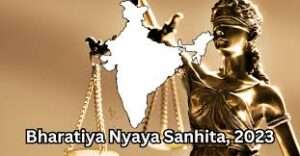
This article has been written by Sumit kumar, a 4th year student at Law college Dehradun, faculty of Uttaranchal university.

Abstract
In India, the legal profession has a long history dating back to ancient times. The legal system in ancient India was largely based on religious texts such as the Vedas and Manusmriti, where the Brahmin caste acted as legal advisors. In the Maurya and Gupta empires, justice was administered by rulers and local councils, with legal experts often providing informal guidance. The legal landscape has evolved over time, influenced by cultural, religious, and colonial factors up to the post-independence era.
Howdy, you all! Welcome to your page of knowledge. You will find different legal blogs, the latest news, current affairs, and many more on this channel. This is the initiative to develop the knowledge of the law in the world, especially for you.
Introduction
The legal system in India has a long and intricate history that covers thousands of years, showcasing the diverse cultural, religious, and political aspects of the country. Starting from ancient times, when legal principles were closely connected to religious texts and community values, to the colonial period that introduced Western legal ideas and frameworks, the development of India’s legal system has been a process of adjustment and change. In 1947, after India gained independence, the legal profession entered a new phase with the introduction of a democratic constitution and a strong judiciary system. The Supreme Court of India became the highest authority in the legal system, while the Advocates Act of 1961 and the Bar Council of India set the standards for overseeing legal education and professional behaviour. The legal profession in India has undergone major transformations due to globalization, technological advancements, and societal changes. Lawyers are now involved in a variety of areas including traditional litigation, corporate law, environmental law, and human rights. This highlights the ever-changing nature of the legal profession in India as it continues to evolve to meet the evolving needs of society.
Evolution of Profession in India
The legal profession in India has evolved through different stages, each shaped by shifts in governance, culture, and society. Here is an overview of the main stages in the development of the legal profession in India:
- Ancient Period
- Medieval Period
- British Colonial Period
- Post-Independence Period
Ancient period
The legal profession in ancient India was deeply connected to the country’s cultural and religious background. It was a blend of formal and informal legal systems, drawing inspiration from Hindu texts, local customs, and the societal norms of that era. Here is a glimpse into the legal profession during ancient times:
Religious Foundation:
In ancient India, laws were based on religious texts like the Vedas, Upanishads, and Manusmriti. These texts set moral and ethical standards for individuals and society, shaping the legal system. The Brahmin caste, highly knowledgeable in religion, had a key role in interpreting and advising on legal and ethical issues based on these texts. They were trusted advisors to rulers on matters of law and governance.
Ancient Legal Structure:
During the Maurya and Gupta empires, legal matters were overseen by kings or their appointed officials, with legal advisors from the Brahmin caste assisting in interpretation and administration of the law. The Arthashastra, credited to Kautilya (Chanakya), offered insight into governance, economics, and legal procedures in the Maurya Empire. In smaller communities and villages, justice was typically delivered through local leaders and councils, such as Panchayats, comprised of respected community members who settled disputes through mediation and arbitration based on customary laws and local traditions.
Informal Nature of legal profession:
In ancient India, there was no formal bar or regulatory body overseeing the legal profession. The roles of judge, advisor, and mediator were flexible and often carried out by individuals with religious or social influence. Legal professionals in ancient India operated under ethical codes based on religious beliefs. Justice was understood holistically, considering not just legal matters but also moral and spiritual aspects.
Role of customary law:
In ancient India, local customs and traditions were crucial in shaping the legal system. Different regions and communities followed their own distinct customs that affected the resolution of legal issues. These customs were intertwined with the broader Dharmic principles, creating a varied and adaptable legal framework.
Medieval Period
During medieval times in India, the legal profession was shaped by a mix of cultures and empires that thrived in that era. Indigenous customs and outside forces, such as Islamic invasions and the rise of the Mughal Empire, played a significant role in shaping the legal systems.
Islamic Influence:
The Islamic conquests and the establishment of the Delhi Sultanate in medieval India introduced Sharia law to the region. During this time, both Hindu and Islamic legal systems coexisted, sometimes blending practices together. Qazis, who served as Islamic judges, played a crucial role in implementing Sharia law, particularly in cities. They were usually chosen by the ruling sultan or emperor. Even with the introduction of Sharia law, Hindu customs and laws continued to be observed. This created a varied legal environment where Hindu and Islamic legal principles often overlapped.
Formalization of Legal Structures:
During the rule of the Mughal Empire (1526-1857), India saw the implementation of more organized legal structures. The Mughal emperors, especially Akbar, set up centralized courts that incorporated both Islamic and local legal customs.
Role of Legal Professionals in Mughal Courts:
Within the Mughal courts, legal experts such as Qazis, Muftis (Islamic legal scholars), and other advisors were appointed. These individuals interpreted Sharia law and provided legal advice to the emperors.
Emphasis on Justice and Fairness:
The Mughal rulers, particularly Akbar, prioritized establishing a righteous and fair legal framework. Akbar introduced policies like Sulh-i-Kul (universal tolerance) to promote fairness and equality among different religious and cultural groups.
British Colonial Period
During the British Colonial Period in India, which lasted from the late 18th century to 1947, there was a notable change in the legal profession. British legal principles, institutions, and administrative structures were brought in, setting the stage for many of the legal practices and professions.
- Charter of 1726: In 1726, King George I of Great Britain issued the Charter which was crucial in shaping the legal and administrative framework of the British East India Company’s settlements in India. Its main goal was to establish a sense of order and structure within the legal system of Calcutta, Madras, and Bombay. The Charter established new legal bodies called the Mayor’s Courts in Calcutta, Madras, and Bombay. These courts were responsible for handling both civil and criminal cases in their respective areas. Each Mayor’s Court consisted of a Mayor and a panel of Aldermen, usually chosen from the local European business owners and government officials. They operated based on English legal norms, bringing British court procedures to India.
- Charter of 1774: The British East India Company had acquired significant control over Indian territories, especially after the Battle of Plassey in 1757 and the Battle of Buxar in 1764. As the British administrative presence expanded, there was a need for a more formalized legal system to address disputes and govern British subjects in India. The Charter of 1774 created the Supreme Court of Judicature at Fort William in Calcutta, which was the first British court in India with extensive jurisdiction over civil and criminal cases. The court’s structure and functioning were closely modelled after English legal principles, aiming to bring a more structured and formal legal system to British India. When English law was introduced in India, it clashed with the country’s existing legal practices and the governance of the East India Company. This disagreement caused disputes between the Supreme Court and the Company’s council, which eventually led to the passing of the Regulating Act of 1773 and the Charter Act of 1781 to define their respective jurisdictions.
- The Bengal Regulation Act of 1793: The Bengal Regulation Act of 1793 was passed while Lord Cornwallis was serving as Governor-General of India. This time saw efforts to simplify and formalize the East India Company’s rule in India through a series of regulations. The act was one of many aimed at creating more defined legal and administrative systems. The Bengal Regulation Act created district and provincial civil courts, along with appeal processes. It also established criminal courts for different levels of offenses. The act introduced a set of laws for the courts, incorporating English legal concepts as well as Hindu and Muslim laws for personal issues. This was one of the first efforts to develop a structured legal system in British India.
- Indian High Courts Act, 1861: The Indian High Courts Act of 1861 was a crucial law passed by the British Parliament to revamp the judicial system in British India. It paved the way for the creation of High Courts in key Indian cities, which became the ultimate legal authorities in their regions. Prior to this act, the judicial system in British India was disjointed, with Supreme Courts and Sadar Courts functioning separately in various areas. The Supreme Courts catered mainly to British subjects based on English law, while the Sadar Courts handled cases involving Indian subjects. This dual setup resulted in inconsistencies and inefficiencies in the delivery of justice. In 1861, the Indian High Courts Act gave the British Crown the power to set up High Courts in key Indian cities through letters patent, consolidating the current legal systems. This resulted in the founding of High Courts in Calcutta, Madras, and Bombay, which replaced the earlier Supreme Courts and Sadar Courts. By establishing unified High Courts with expanded jurisdiction, the act aimed to bring greater coherence and consistency to the judicial system. Additionally, it played a role in advancing the professionalization of the legal field in India, paving the way for a more structured legal education system and the growth of skilled legal practitioners.
- Legal Practitioners Act, 1879: In the late 19th century, the legal profession in British India saw significant growth, with different types of legal practitioners like pleaders, vakils, and barristers becoming more common. Recognizing the need for a standardized way to regulate these professionals, the British administration passed the Legal Practitioners Act of 1879. This act set up a process for licensing legal practitioners and outlined the necessary qualifications for practicing law, guaranteeing that these professionals had the proper training and expertise. Additionally, the act included regulations on the behaviour of legal practitioners, covering professional ethics and consequences for any misconduct.
- Indian Bar Committee 1923: In 1923, the Indian Bar Committee, also known as the Chamier Committee, was established to address the fragmented legal profession in British India. Various categories of practitioners were operating under different rules and regulations, leading to a lack of consistency and professionalism. The British government recognized the need for a unified framework and appointed Sir Edward Chamier, a former Chief Justice of the Patna High Court, to chair the committee. The committee suggested that Bar Councils should be set up in key Indian states to oversee legal practitioners and grant licenses. They also proposed setting standard qualifications for practicing law and promoting formal legal education programs.
- Indian Bar Council Act, 1926: The Indian Bar Council Act of 1926 was established following the recommendations of the Indian Bar Committee of 1923, also known as the Chamier Committee. This committee was responsible for assessing the legal profession and proposing ways to regulate and unify it. Prior to the passing of this act, the legal profession in India was disjointed, with different types of legal practitioners working under disparate regulations, resulting in inconsistencies and a lack of centralized supervision. The main goal of the act was to establish and incorporate Bar Councils for specific courts, delegate powers and responsibilities to these councils, and revise the laws concerning legal practitioners in those courts. The act stipulated the creation of a Bar Council for each high court, with each council consisting of 15 members. Four members were to be appointed by the respective High Court, while the remaining 10 were to be elected by the High Court Advocates from their own ranks.
Post-Independence Era
- All India Bar Committee, 1951: The All India Bar Committee, formed in 1951 and led by Chairman S. R. Das Rau, was tasked with assessing the legal profession in India and proposing changes. This committee played a key role in the overarching goal of enhancing the legal system in a newly independent India. India became independent in 1947; requiring changes to the legal system inherited from the British colonial period to better suit the values of a democratic nation. Despite being more unified than before, the legal profession still faced inconsistencies and lacked a national governing body. In response, the All India Bar Committee was established in 1951. The legal sector encountered discrepancies and a lack of a centralized governing authority. In 1951, the All India Bar Committee was formed to address these issues. The committee suggested the establishment of State Bar Councils to supervise lawyers at the state level. These councils would operate under the supervision of the national Bar Council, overseeing licensing, discipline, and regulatory affairs within their respective regions.
- Advocates Act, 1961: In India, before the Advocates Act of 1961, the legal profession was regulated by a mix of colonial-era rules and provincial laws. This caused inconsistencies in how legal practitioners were regulated, their qualifications, and ethical standards. The All India Bar Committee of 1951, also known as the Rau Committee, suggested a unified system with a central regulatory body to tackle these problems. This eventually led to the Advocates Act of 1961.
Key Provisions are:
- The Bar Council of India (BCI) was established by an act to regulate the legal profession nationally. The BCI is responsible for overseeing legal education, maintaining professional standards, and handling disciplinary actions.
- The law outlined the criteria for becoming a lawyer in India, including the necessary education and steps for joining the bar. It established a consistent method for registering lawyers with the State Bar Councils.
- The legislation created guidelines for lawyers to follow, focusing on ethics and professionalism. It also formed panels within governing bodies to address instances of misconduct by legal professionals.
- The law granted lawyers the sole right to practice law and represent clients in court. It specified the rights and privileges of lawyers, ensuring their freedom to practice throughout India.
Conclusion
Indian legal profession has seen a multifaceted path commanded by religious, cultural, and colonial powers. Laws in India can be traced back to religious texts and enforced by village councils since ancient times. From the Mughal Empire’s centralized courts to the emphasis on justice and fairness under Akbar, it has evolved tremendously in different periods including the medieval times (when Sharia law was introduced following Islamic invasions).
During British rule in India, the legal system underwent notable changes; British laws were introduced, and judges began working under formal legal structures which continue to be the basis of the present legal system in this country. From 1726 Charter for instance through MP Act 1879 there were different statutes and law making bodies that rose in India shaping legal profession.
After independence, the drafting of the Advocates Act of 1961 opened the way for the unification and standardization of the legal system by setting up the Bar Council of India and ensuring the regulation of lawyers. The legislation gave a legal status to the profession and laid down moral principles as well as required qualifications for lawyers, hence reserving the right to practice law strictly for them.
The progression of the legal profession in India exemplifies its historical intricacies and the persistent effects of religious, cultural and colonial forces. This development highlights the flexibility of the Indian legal system as well as its consistent commitment to justice, equity and professional standards in legal practice.
Reference
- https://www.indiacode.nic.in/bitstream/123456789/15666/1/the_bengal_inheritance_regulation%2C_1793.pdf
- https://main.sci.gov.in/pdf/Museum/m2.pdf
- https://lddashboard.legislative.gov.in/sites/default/files/A1879-18.pdf
- https://lddashboard.legislative.gov.in/sites/default/files/A1926-38.pdf
- https://www.barcouncilofindia.org/info/history
- https://www.indiacode.nic.in/bitstream/123456789/1631/1/A1961_25.pdf
- https://www.jstor.org/stable/3053007






